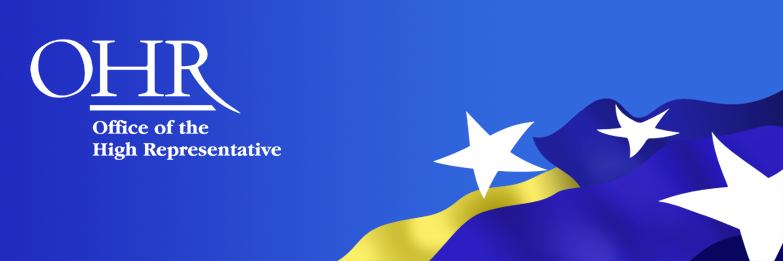The National Gallery of BiH
6 December 2005
Ladies and Gentlemen
In 1945, there were five million refugees and displaced persons across the continent of Europe. Almost none returned to their pre-World War II homes.
In 1995 there were more than two million refugees and displaced persons as a result of the war in Bosnia and Herzegovina . In the last ten years more than a million have gone back to their homes.
Few people a decade ago imagined that theis scale of refugee return could be achieved.
In the early years, the main obstacles to return were trauma and intimidation – the trauma of those who had been evicted and the continuing intimidation of those who had evicted them.
In a climate of lawlessness and administrative chaos, local institutions – police, municipalities, social services, and so on – were politically indisposed to support return, or were administratively incapable of creating an environment conducive to return.
Through a painstaking but unremitting political process – that included the removal of obstructionist police and municipal officers – this negative climate was changed. Annual return figures increased from tens of thousands to hundreds of thousands at the start of the new millennium, though the trend has again slowed down recently.
Through its Reconstruction and Return Task Force, which brought all of the agencies connected to return under a single coordinating umbrella, was instrumental in securing the cumulative increase in returns from the end of the nineties.
Another multi-agency initiative was the Property Law Implementation Plan, which tracked administrative and political compliance – municipality by municipality across the length and breadth of the land – obliged recalcitrant municipalities to honour their legal and moral obligations through a combination of legal recourse, political pressure, media exposure and sheer persistence. The PLIP model has become a model to be followed in other post-conflict countries.
UNHCR continues to play a vital part in this story. The agency set the pace of refugee return following the Dayton agreement and has ensured that the evolution of a modern democratic society is predicated on the reintegration of communities – not on their permanent division.
And two years ago the BiH Ministry for Human Rights and Refugees took over the baton as the lead agency responsible for sustaining the return process.
Today, the biggest obstacle to return is no longer political or administrative; it is a lack of economic opportunity.
Every reform that makes it easier to start a new company in BiH, or makes it easier to attract investment, or makes it easier to create new jobs enhances the ability of remaining refugees and DPs to return to their homes.
In BiH today there are more than 180,000 internally displaced citizens who have not yet been able to return their prewar homes. As long as there is a single family that wants to return but hasn’t yet been able to do so this work will not be finished.
The pictures at this exhibition constitute a remarkable document, because they testify to the simple truth that, in time, evil does not triumph.
Every single man, woman and child who has returned to live in towns and villages across Bosnia and Herzegovina and the entire Balkan region, gives daily testimony to this truth.
These people have shown courage and fortitude. In many cases they have shown a remarkable capacity to forgive.
The more than one million people who have gone back to their places of origin in BiH since the Dayton Agreement have asserted a right never before asserted in Europe: the right of refugees to return to their homes.
And they have asserted that right on behalf of all of us.
We owe them a debt of gratitude.
Thank you













